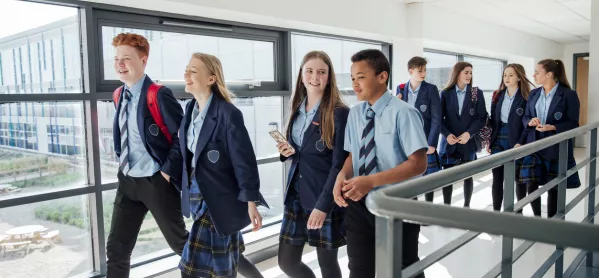“It could happen here.” Four words that everyone in schools should be familiar with, in line with their safeguarding roles. A small sentence, but a large statement - one that feels heavy.
Schools are communities; we serve generations of families. Often we live in that community, as well as work in it. Sometimes we’ve grown up in that community, too. It’s part and parcel of who we are. Not only this, but we also live and breathe our school communities, our staff, our children, our families.
With the weight of that connection, believing that awful things can happen here - by our community, towards our community - is hard. But it is the very essence of safeguarding, laid out clearly in our legal duties in Keeping Children Safe in Education (KCSIE).
While it may be difficult to accept that abuse of children can happen anywhere, including the places you love, this must be a driving force in any school.
Safeguarding in schools: Having clear behaviour policies
In terms of keeping children safe, having high expectations and clear behaviour policies is a vital part of how we do this in schools. All too often, we see schools and school leaders attacked for having high expectations. But I believe these schools are simply fulfilling their legal obligation to make schools safe and secure.
Where schools have loose, unclear behaviour systems, poor behaviour can be rife. And that can, sadly, include peer-on-peer abuse. We’ve seen recently through Everyone’s Invited that, sadly, peer-on-peer abuse can and does happen.
This is where KCSIE and clear behaviour systems go hand in hand: one facilitates the other. That isn’t to say that there won’t be peer-on-peer abuse in a school that has high expectations of students. Indeed, the very essence of KCSIE means that we must believe it could happen.
However, having high expectations may play a significant role in reducing risk. Where schools take small transgressions seriously, bigger things can be less likely to occur.
Children must feel safe in school
This goes hand in hand with creating a school culture. Children must feel safe in school and this should be at the heart of the way that all policies and systems are designed.
If corridors are boisterous, physically threatening environments, schools must find ways to make these more safe. If the toilets are a threatening environment, leaders must take steps to make these safe spaces for all young people. If children cannot learn because of the disruptive behaviours of others, leaders must act to address this.
This is where our systems support our safeguarding of children. If we can create safer environments, through our strategic and operational choices, we can improve how well we keep children safe in school.
Safeguarding is the most important aspect of working with children. While we hope that safeguarding incidents may never happen, we must view our worlds as places where they could. This allows us to take proactive steps to make our schools safer places for children.
We might be able to negate risk, but we must also accept that it could still happen here. Any child suffering abuse must know that they will be believed by their trusted adults. We must, fundamentally, believe that it did happen here.
Amy Forrester is an English teacher and director of pastoral care (key stage 4) at Cockermouth School in Cumbria. The views expressed are her own, and not necessarily those of her employer




